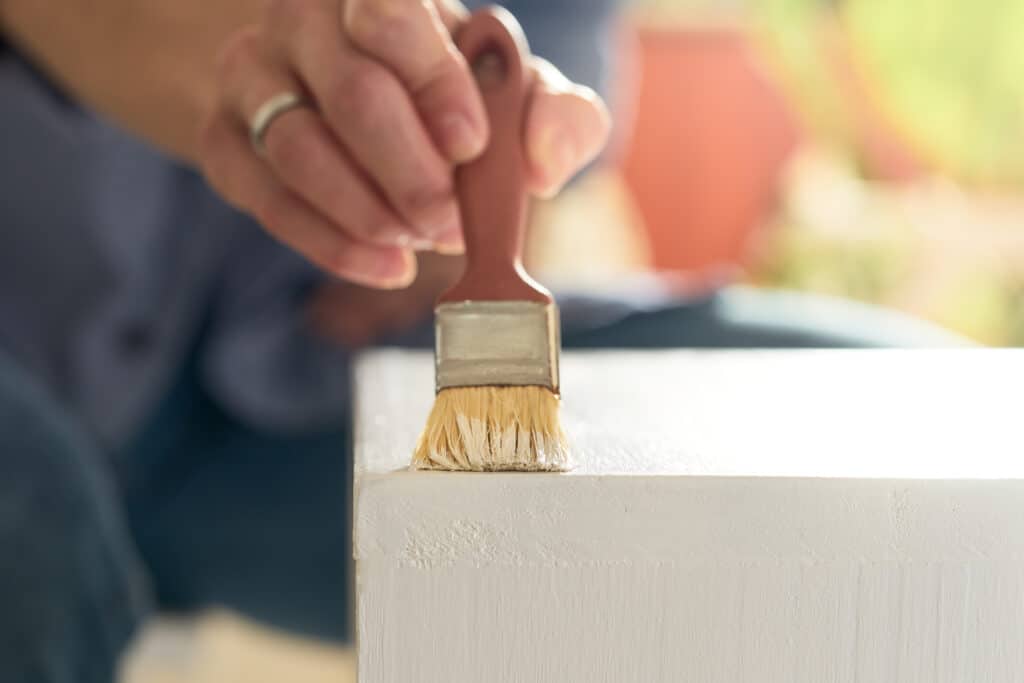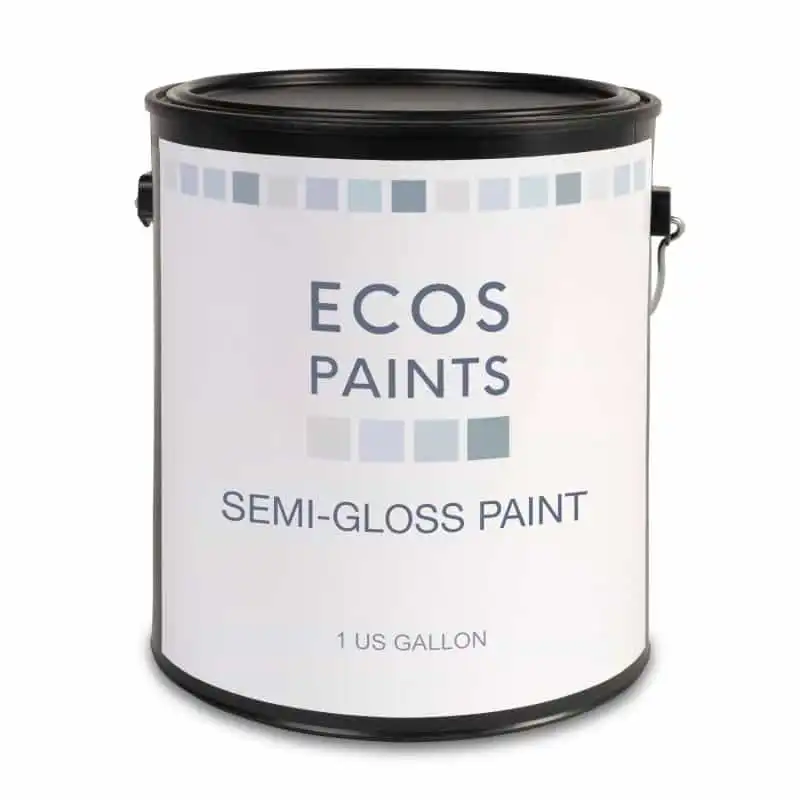- You are here:
- Home »
- Non Toxic Home Poducts »
- Is Oil Paint Safe for Home Use?
Is Oil-based Paint Toxic?
Oil-based paints are widely used for a variety of projects, from painting furniture to refinishing walls. They’re known for their long-lasting durability and beautiful finishes. Although they are hardly ever used on walls nowadays, they´re still used on wood and metal surfaces.
But many people are unaware of this paint type’s health and environmental risks. In this article, we’ll take a closer look at these risks and possible alternatives to oil-based paint that may be safer for you and the environment.
Health Hazards of Oil-Based Paint
Oil-based paint contains volatile organic compounds (VOCs) which can be hazardous to your health in high concentrations. VOCs are pollutants released into the air during the drying process, and they can accumulate in poorly ventilated spaces. Common symptoms from exposure to these chemicals include headaches, dizziness, nausea, skin and eye irritation, and respiratory difficulties.
In addition to VOCs, oil-based paints also contain pigments and chemicals that may be harmful if inhaled or ingested. Although there’s not enough research on how these chemicals affect pregnant women, it´s advised that they avoid exposure to freshly-painted rooms for at least 24 hours. Children should also avoid contact with oil-based paints as they may be more sensitive to the chemicals.

Environmental Hazards of Oil-Based Paints
While many oil-based paints are now formulated with low levels of VOCs, they still produce emissions that can pollute the environment. The fumes produced by burning off these chemicals contribute to smog formation and can cause long-term damage to nearby ecosystems.
Oil-based paint also contains hazardous products such as turpentine and petroleum distillates which can contaminate groundwater or seep into soil when disposed of improperly. Because of this, it’s important to properly dispose of all containers used when working with oil-based paint as soon as possible.
When disposing of furniture and fixtures painted with oil-based paints, it is important to find a local recycling center that will take them to avoid further contamination of the environment.
Read More: Best Non-Toxic Paint Brands
Reducing Exposure to Toxins when Using Oil-Based Paint:
When it comes to safely working with oil-based paint, there are a few steps you can take to reduce your exposure to VOCs and other toxins:
- Always ensure proper ventilation in the space you’re working in by opening windows and using a fan. Additionally, you can use an air purifier to eliminate any lingering fumes.
- Wear protective gear such as gloves, eye protection, and a face mask to reduce the risk of inhaling toxins.
- Take breaks outside every few hours to reduce your exposure to the chemicals.
- Look for oil-based paints that are specifically formulated with low VOCs as these may be less damaging to your health and the environment. The US Environmental Protection Agency mandates that VOC levels in paint be not more than 380 g/L, yet certain oil-based paints now have even lower amounts of VOCs, with some boasting under 100 g/L. Make sure to check the MSDS of any given paint for further information on its specific content.
- Dispose of all containers used with oil-based paint responsibly to avoid contaminating the environment.
Other Precautions to Consider:
Apart from safely handling the product itself, there are other precautions you should take when using oil-based paints:
- Be sure to read the instructions on the label of any product you are using and check for safety warnings concerning fumes or vapors that may be emitted from the product.
- Don´t store the paint in containers such as glasses and cups; doing so may put children in grave danger of drinking the toxic chemicals.
- Store used and unused oil-based paints in tightly sealed original containers and out of reach of children and pets. Ideally, oils-based paints should be stored in locked cupboards, away from heat and direct sunlight.
Following these guidelines will help you avoid oil-based paint poisoning, and keep your family safe from harm when using any type of paint product. Remember that safety always comes first! Be sure to take all necessary precautions before starting a painting project, and clean up properly afterwards. If you are ever in doubt, reach out to a professional for assistance.
Read More: Is Water-Based Paint Safe?
Alternatives To Oil Based Paint
If you’re worried about potential health hazards posed by oil-based paint, there are alternatives available on the market today made from inert materials such as water. There are some zero-VOC acrylic paints that provide just as much lasting protection as an oil-based formula without releasing potentially harmful volatile organic compounds into your home or the environment.
ECOS paints, for example, are non-toxic and certified by the US Environmental Protection Agency as safe for indoor use. They also come in a wide range of colors and finishes so you can still get the look you’re after with this type of paint.
Zero-VOC, non-toxic, long-lasting, protective finish with a medium to high sheen for interior and exterior surfaces
Another alternative to oil-based paint is natural linseed oil paint, it releases a delicate, natural smell and works very well on doors and woodworking projects, however, it does take longer to dry than oil-based and latex paints.
Water-based alkyd paint is also an option, but it’s not zero-VOC. This paint is a hybrid made from water- and oil-based ingredients, so it offers the same durability as oil-based paint without high VOC levels. It also provides a glossy finish, similar to oil-based paint. Sherwin-Williams ProClassic Alkyd Enamel is a popular example of this type of paint as it works well on both interior and exterior surfaces, including trim, cabinets, and doors.
So, if you’re looking for an alternative to oil-based paint, these are just a few of the options available. Be sure to do your research and consider all your options before making a decision on which type of paint to use.
Read More: 20 Steps to a Chemical-Free Home
Conclusion
While oil-based paints are durable and long-lasting, they can also pose certain health risks. It’s important to be mindful of their potential dangers, and take all necessary precautions to ensure your safety when using them. There are alternatives to consider if you’re looking for something safer or have concerns about VOC levels in your home.
Be sure to do your research and consult a professional before embarking on any painting project. Taking the time to understand all of your options and being aware of the potential risks will help you make an informed decision so that you can enjoy the results without risking your family’s health.
About the Author Kamila Flieger
My name is Kamila, and I'm passionate about researching non-toxic, organic products for the home. I believe it's so important to create a safe and healthy environment for our families, and I enjoy helping others do the same.


